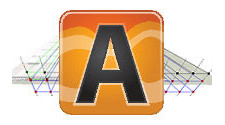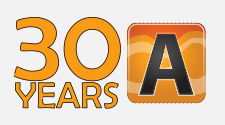 Quintessa is pleased to announce that the latest version of AMBER has been released. AMBER 6.7 includes new features to support the quality assurance of AMBER models, allowing users to demonstrate that the definition of expressions and the transcription of numerical values from the supporting documentation has been subject to due review. In addition, AMBER 6.7 contains a number of calculation and usability improvements and bug fixes.
If you have a valid software maintenance agreement, please download AMBER 6.7. If not, you can download the AMBER 6.7 Demo.
Quintessa is pleased to announce that the latest version of AMBER has been released. AMBER 6.7 includes new features to support the quality assurance of AMBER models, allowing users to demonstrate that the definition of expressions and the transcription of numerical values from the supporting documentation has been subject to due review. In addition, AMBER 6.7 contains a number of calculation and usability improvements and bug fixes.
If you have a valid software maintenance agreement, please download AMBER 6.7. If not, you can download the AMBER 6.7 Demo.
If you would like to renew your maintenance agreement or purchase AMBER, please contact us.
 It is now 30 years since the development of the prototype version of AMBER! Having evolved significantly, it now allows users to build and visualise 3D dynamic compartment models of contaminants in a wide array of systems and release scenarios.
It is now 30 years since the development of the prototype version of AMBER! Having evolved significantly, it now allows users to build and visualise 3D dynamic compartment models of contaminants in a wide array of systems and release scenarios.
Back in 1993, AMBER was originally envisaged as a tool for modelling the migration and fate of contaminants (radioactive or otherwise) in the surface environment. However, it soon became applied to other parts of engineered and natural systems, such as engineered repositories and the geosphere, and its use was extended to the integrated modelling of entire systems. Today, AMBER has been used by over 100 organisations in more than 40 countries, supported by documentation, tutorial videos and training courses.
For further details, read the full news story.
AMBER has been involved in calculations to support the use of narrow-diameter boreholes for the disposal of disused sealed radioactive sources (DSRS).
As part of programmes supported by the International Atomic Energy Agency (IAEA) in Malaysia and Ghana, Quintessa has played active roles such as hosting and providing training, developing supporting documents such as a generic post-closure radiological safety assessment (GSA) and the BDC Scoping Tool. Essential to this was the use of AMBER aiming to identify key safety features of disposal concepts under varying conditions.
For further details, read the full news story.

Quintessa recently provided a week-long in-person tailored AMBER training course to two Assystem employees.
Covering both the theoretical and practical capabilities of AMBER, the course also covered the fundamental principles of safety cases and safety assessment methodology . Training focussing on conceptual and mathematical representation of radioactive waste disposal, transport pathways and human exposure was given. The participants created an AMBER model of a radioactive waste disposal system.
For further details, read the full news story.

The following publications from 2022 and 2023 cite the use of AMBER.
Quintessa is fully committed to the long-term development and support of AMBER, with on-going development and software updates. Developments planned for the future include improvements to the user interface and the development of further example case files for use by license holders.
We very much welcome feedback about AMBER, including ideas and suggestions for further developments that would help maintain its utility and applicability to a wide range of contaminant transport and risk assessment situations. Please contact the AMBER team with any suggestions or requests. Similarly, to report a bug in AMBER, please email details to the AMBER team.
Quintessa continues to support AMBER, both through directed support to licence holders and by applying the software to safety and performance assessment studies of contaminants in the environment. Feel free to contact us if you have any questions about AMBER, its application and/or about our associated support and training programme.